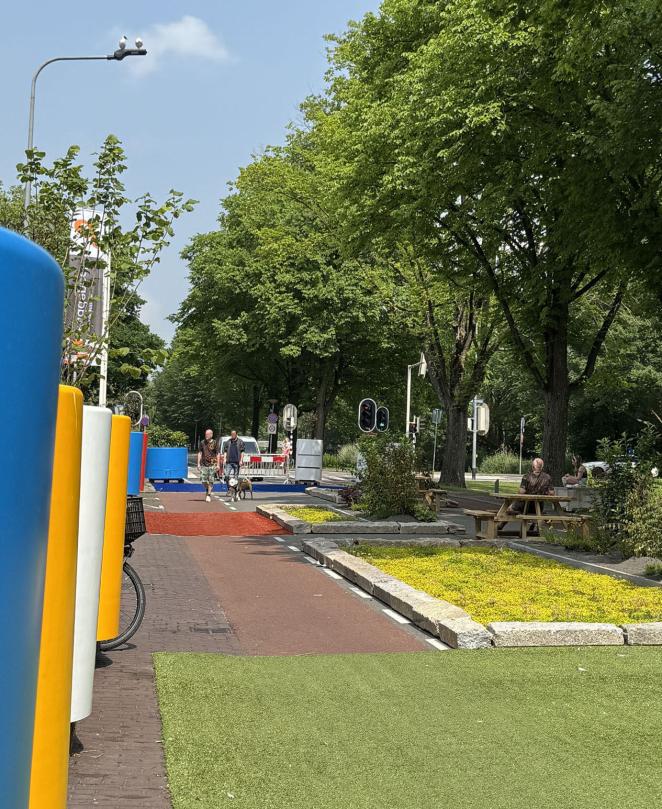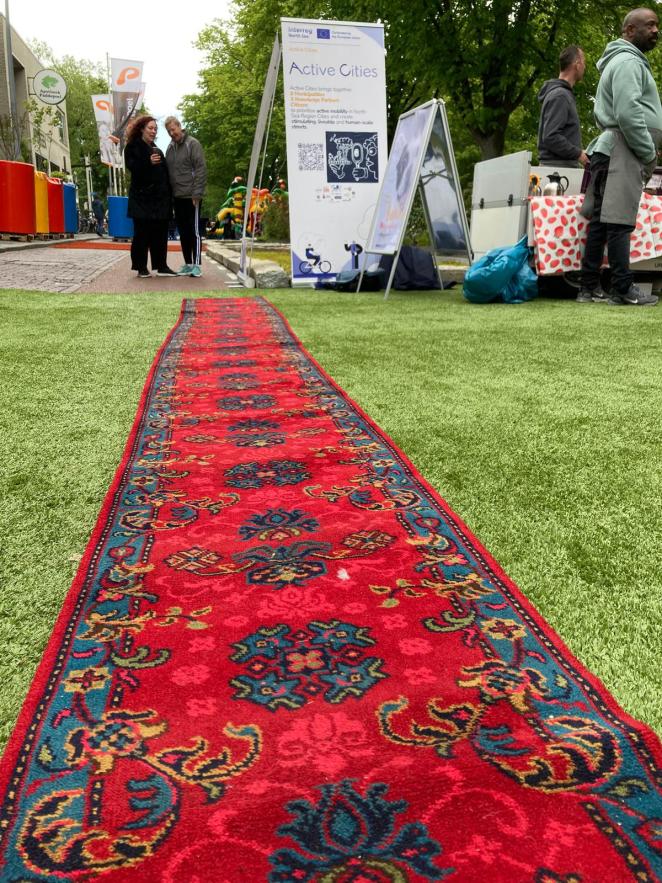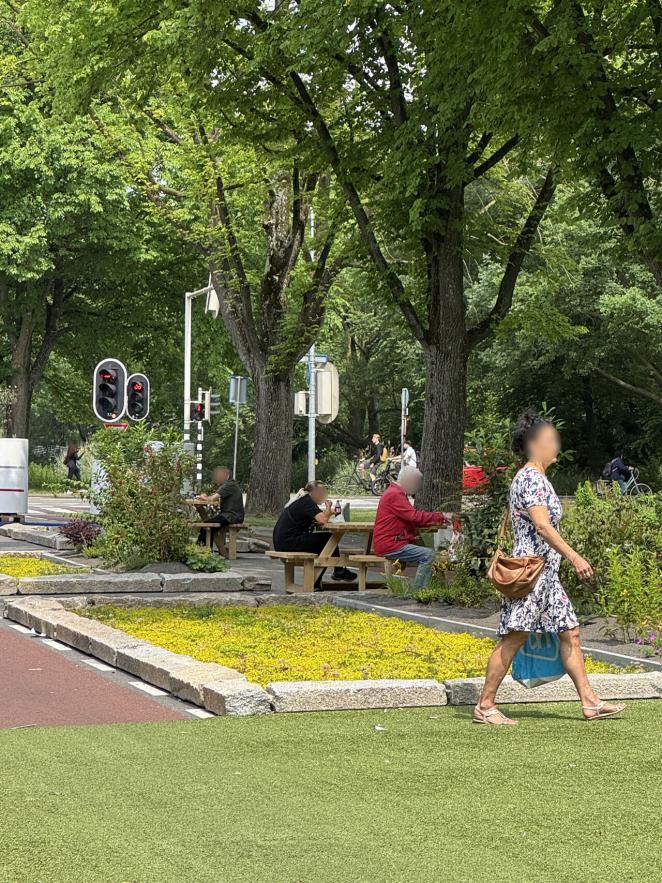Groningen, a city in the Netherlands, is actively working to transform its urban spaces, putting people at the forefront. As part of the Active Cities project, they have launched an exciting temporary street experiment in the neighbourhood of Paddepoel.

Written by Femke Niekerk, Frank Aikema and Evite van Winkoop
Recently, Groningen began a unique six-week experiment, temporarily changing a section of road from a place for traffic into a lively, people-focused area. This transformation required an eight-week road closure to allow for a complete redesign, which included adding green elements, artificial grass, and inviting places for people to meet. Beyond just looking good, the area became a centre of activity, with various local groups and the municipality itself organising a schedule of events. During this time, the project team actively spoke with everyone, from casual passers-by to local residents, keen to hear their thoughts and experiences on the newly arranged space.
This experiment is a vital part of Groningen's larger urban development plan. The city's main aim is to give priority to those walking and cycling, shifting the focus from vehicle movement to creating active, welcoming public areas. This approach is strongly supported by important city documents, such as their Environmental Strategy, Mobility Vision, and the "New Space for Living" Design Guidelines. This pilot project serves as a practical test for applying these guidelines, allowing the city to see what happens when public space is significantly altered. It also provides an opportunity for the city organisation to gain more experience in setting up temporary street experiments throughout the city.

What happened? How have people responded?
The experiment started with a vibrant opening event, featuring a dance workshop, a rap performance, and plenty of fun play equipment for younger children. The space also hosted an Arabic culture market, and specific sports activities were arranged for both children and older adults. Local women’s associations held gatherings, and a music jam session was also planned, showing the versatility of the area and the many different ways it could now be used.
While data collection is still ongoing, initial responses from local residents have been mostly good. Feedback is being gathered using a dedicated Walkability app and an additional research effort focusing on the views of people living nearby. On site, most individuals have reacted very positively, with some even asking if the experiment could last longer. The organised events have clearly drawn more visitors to the area, creating a strong sense of community involvement.
However, as with any major city change, some challenges can emerge. Some companies expressed concerns about the extra effort needed to load and unload supplies, and how accessible the area was for people with limited movement. The project team understands these points and has already put in place alternative solutions very close to the area.

Once the experiment concludes, all collected information will be thoroughly reviewed. This important data will then be used directly to help design the final public space in this area, connecting it with the planned “car-cut” Eikelaan project and the larger renovation of the shopping centre. Groningen’s street experiment is set to provide key understandings that will help shape a more active and lively city for all its inhabitants.
